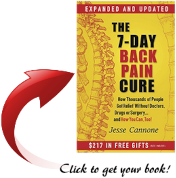Virtual reality (VR) is a state-of-the-art technology that fully engages individuals in interactive computer-generated environments, also known as virtual environments. And VR has emerged as a promising tool for pain relief, providing numerous methods to alleviate discomfort and enhance overall well-being. However, please note that I am not a medical professional, and it is important to consult with healthcare experts to determine the suitability and effectiveness of VR for managing your specific pain condition.

VR can assist with pain relief in several ways:
- Distraction: VR can serve as a powerful distraction tool by immersing individuals in a virtual environment that captures their attention and helps them stop thinking about the pain they are experiencing. By providing engaging and interactive experiences, VR can effectively reduce the perception of pain.
- Relaxation and Stress Reduction: VR environments can be designed to promote relaxation and stress reduction. By creating serene and calming virtual landscapes or incorporating guided meditation exercises, VR can help individuals relax both their mind and body, leading to a reduction in pain levels.
- Desensitization and Exposure Therapy: VR can be used to expose individuals to situations that cause or bring about pain or anxiety in a careful and gradual manner. This technique is particularly useful for managing chronic pain or phobias. By gradually exposing individuals to triggers while in a virtual environment, VR can help them become less sensitive or reactive to those things, ultimately reducing their pain response.
- Biofeedback and Neurofeedback: VR systems can be integrated with biofeedback and neurofeedback technologies to provide real-time information about an individual’s physiological responses, such as heart rate, breathing patterns, or brain activity. By visualizing these responses within the VR environment, individuals can learn to regulate their physiological states, which can positively impact pain perception and management.
- Rehabilitation and Physical Therapy: VR is increasingly being used in rehabilitation and physical therapy settings to assist with pain management. By providing interactive and engaging virtual environments, VR can motivate individuals to engage in therapeutic exercises, such as range of motion exercises or virtual sports activities, which can aid in pain relief and promote physical recovery.
- Education and Empowerment: VR can be used to educate individuals about the nature of their pain, its causes, and potential management strategies. By visualizing the underlying mechanisms of pain or demonstrating techniques like relaxation exercises, VR can empower individuals with knowledge and skills to better understand and manage their pain.

It is important to note that while VR can be a valuable tool for pain relief, it should be used as part of a comprehensive pain management plan and under the guidance of healthcare professionals. Each individual’s response to VR may vary, and its effectiveness can depend on factors such as the type and severity of pain, as well as the individual’s preferences and needs.
To Your Success & Freedom,
Glenn Shimabukuro



